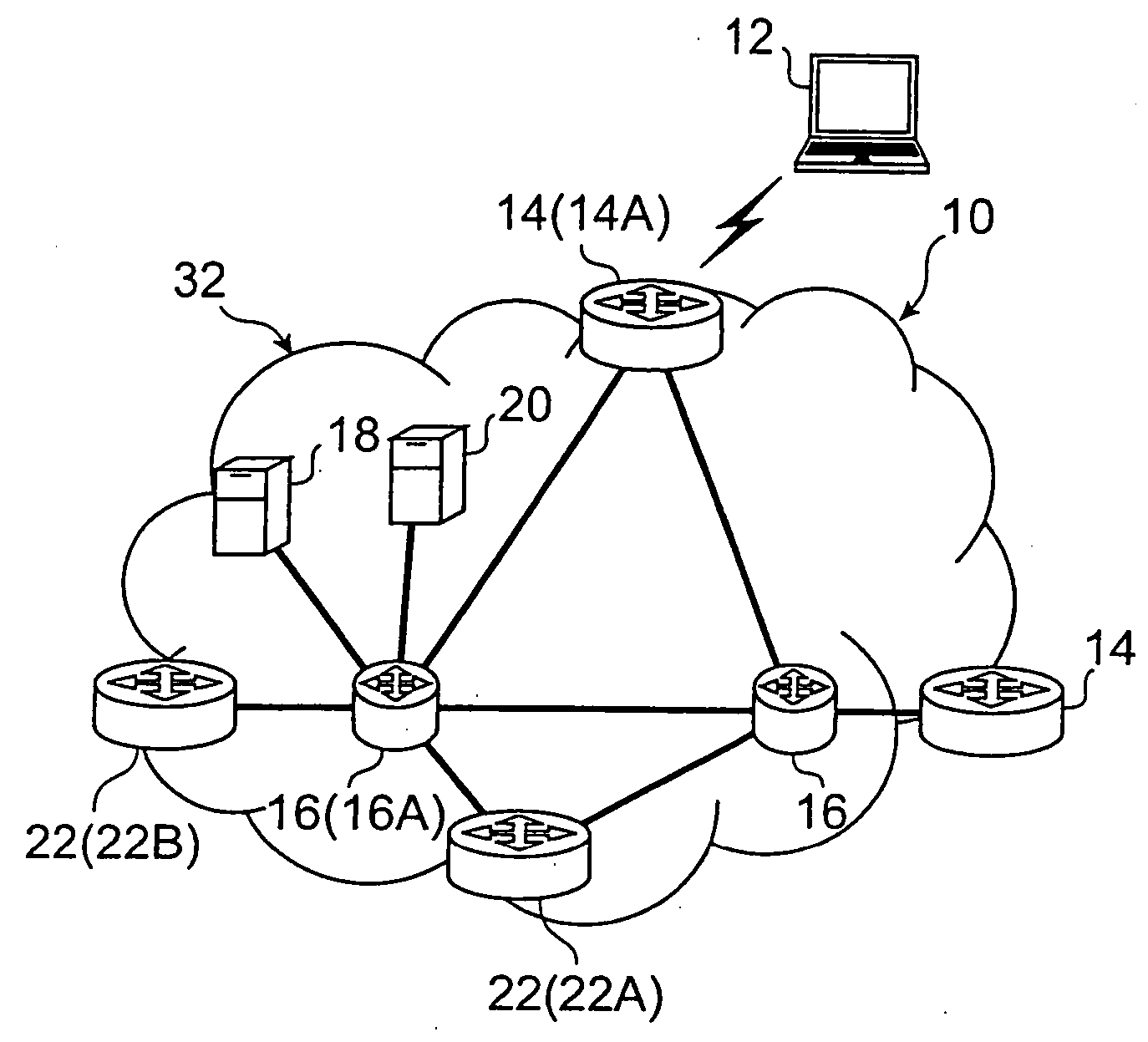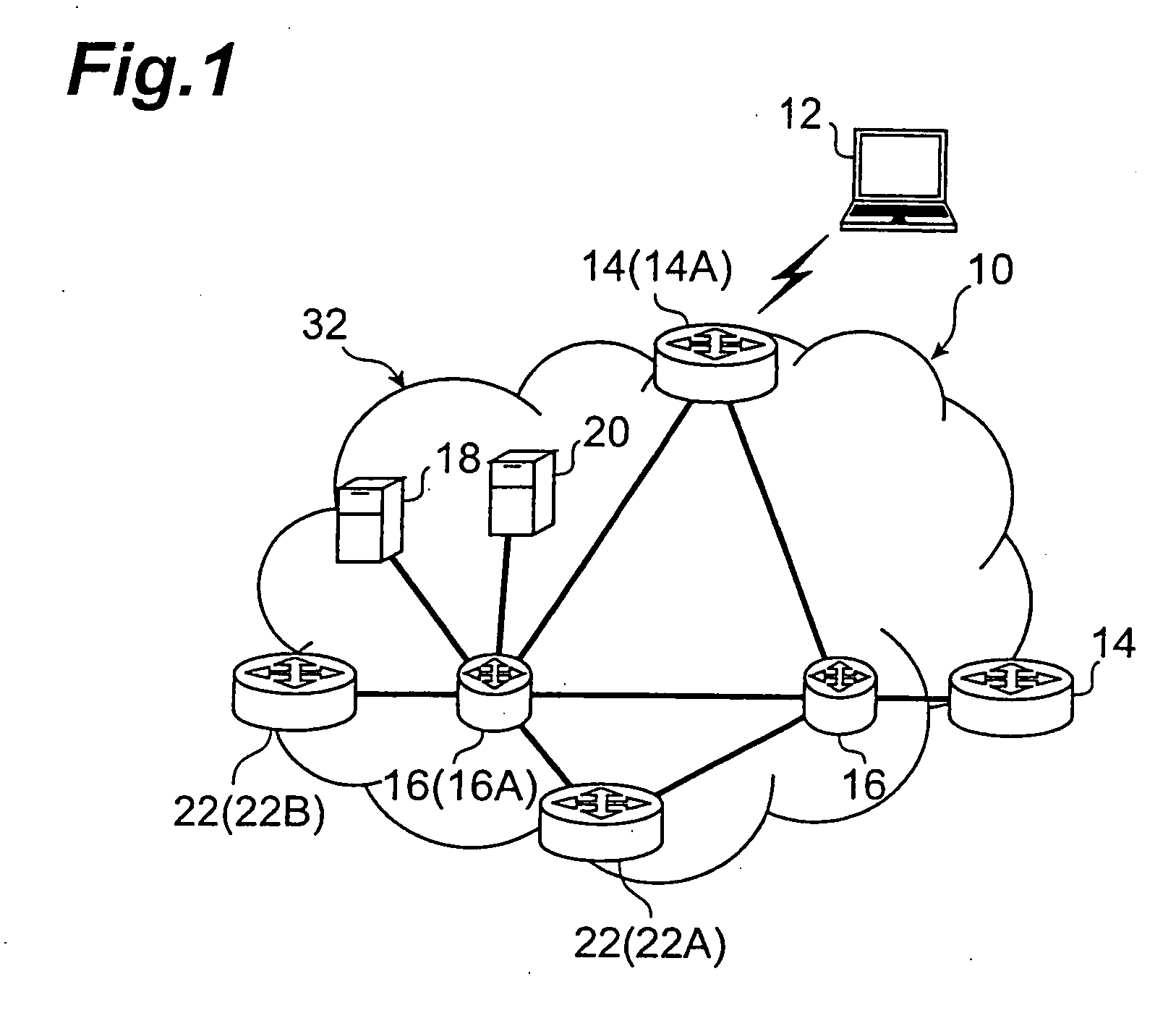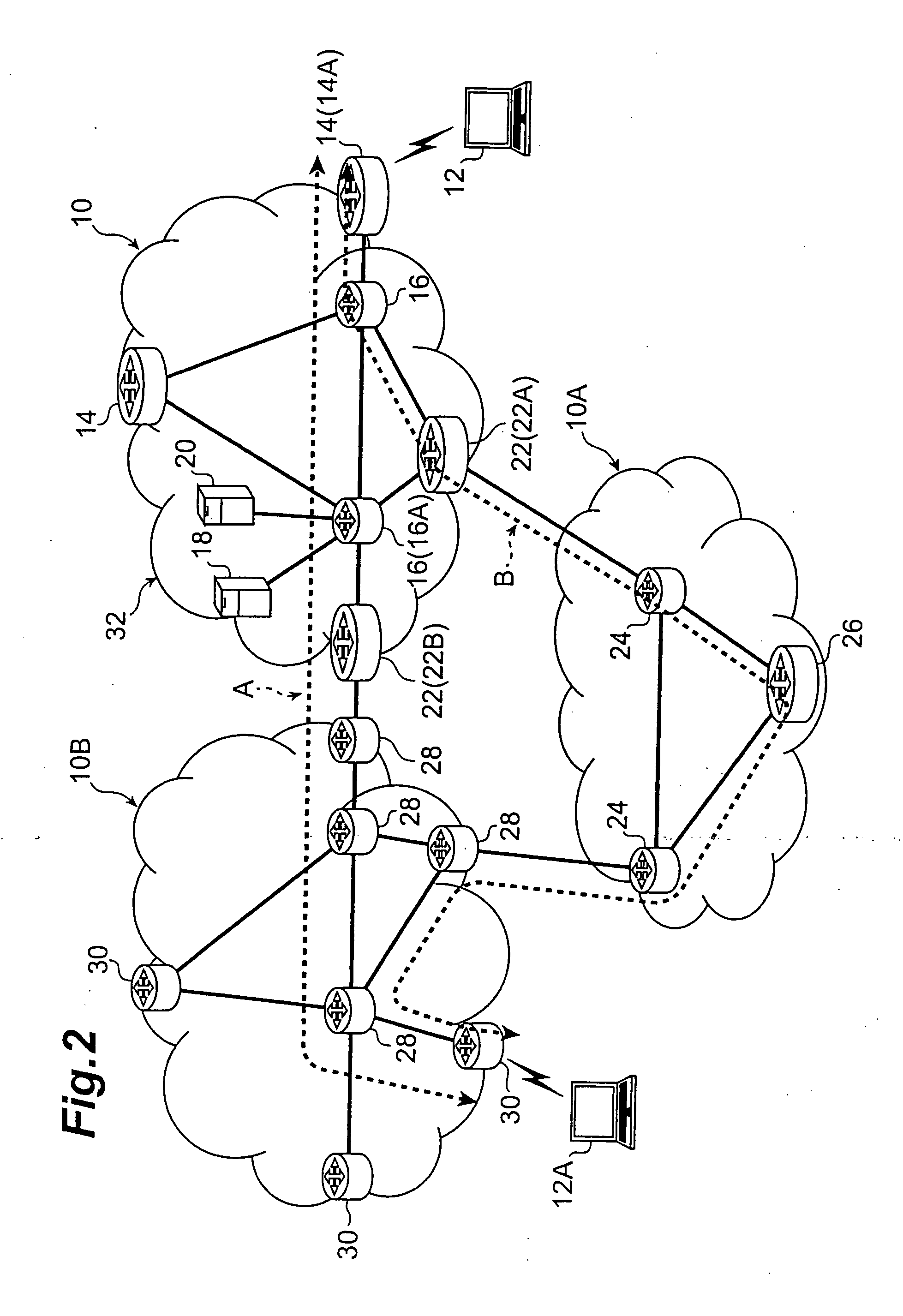[0013] Non-
patent Document 3 above describes a technology of placing a Binding Proxy Agent (BPA) between the terminal not interpreting the Mobile-IPv6 protocol, and the Mobile-IP terminal. This BPA is able to make an appropriate response to the packets for Return Routability transmitted from the Mobile-IP terminal. The BPA performs the exchange of the
authentication keys and the reception of the BU message transmitted from the Mobile-IP terminal, thereby retaining the Binding information. It enables the communication state to be maintained between the terminal not interpreting the Mobile-IPv6 protocol, and the Mobile-IP terminal. However, this BPA needs to receive the two types of packets sent from the Mobile-IP terminal by Return Routability, and thus has to be located near the terminal not interpreting the Mobile-IPv6 protocol. Therefore, an increase in the number of access routers as interfaces between Mobile-IP terminals and the network will require a large number of BPAs. Since the BPA also performs a BU message storing process, a packet reconstructing process, etc. as well as the responding process to Return Routability, it tends to be overloaded, so as to cause a situation of packet delay or the like.
[0014] The above-stated technology of placing BPA is based on the assumption that existing IPv6 fixed terminals are terminals not interpreting the Mobile-IPv6 protocol. For this reason, where a terminal not interpreting the Mobile-IPv6 protocol is a mobile terminal like the IP square terminal, the following problem will arise. Namely, when the IP square terminal moves so as to change its BPA to another during communication with the Mobile-IP terminal, the BPA used after the movement of the terminal stores no Binding information about the Mobile-IP terminal, and thus the communication route between the Mobile-IP terminal and the IP square terminal is switched to the route via HA. Then the BPA again responds to the packets for Return Routability transmitted from the Mobile-IP terminal, whereupon the communication is performed through the
optimal route between the Mobile-IP terminal and the IP square terminal. In this manner, the communication is switched to that through the communication route via HA every time the IP square terminal moves to cause the change of BPA. This switching will result in such situations as
packet loss, increase of packet transfer delay and jitter, and so on. Since signaling due to Return Routability occurs at BPA every time each of IP square terminals moves so as to cause the change of BPA, it will result in facilitating the delay of packet and the like.
[0020] Another preferred configuration is one further comprising a boundary transfer device placed at a
boundary location between the first network and the second network, wherein the boundary transfer device decapsulates an encapsulated packet which the route optimization device transmits to the first communication terminal. In this configuration, the
packet transmission from the route optimization device to the boundary transfer device is carried out more securely.
[0021] Another preferred configuration is one wherein the boundary transfer device receives the route optimization information transmitted from the first communication terminal and transfers the route optimization information to the route optimization device, and wherein the route optimization device receives the route optimization information from the first communication terminal via the boundary transfer device. In this configuration, it is feasible to significantly avoid a situation in which the route optimization information arrives at the route optimization device through a redundant route.
[0027] Preferably, the communication
system comprises a boundary transfer device placed at a
boundary location between the first network and the second network, and the
communication control method further comprises: a step wherein the route optimization device encapsulates a packet to be transmitted to the first communication terminal; and a step wherein the boundary transfer device decapsulates the packet encapsulated by the route optimization device. In this case, the
packet transmission from the route optimization device to the boundary transfer device can be carried out more securely.
[0028] Preferably, when receiving the route optimization information from the first communication terminal, the route optimization device receives the route optimization information via the boundary transfer device which receives the route optimization information transmitted from the first communication terminal and which transfers the route optimization information to the route optimization device. In this case, it is feasible to significantly avoid a situation in which the route optimization information arrives at the route optimization device through a redundant route.
 Login to View More
Login to View More  Login to View More
Login to View More 


